 Abraham Lincoln
If given the truth, the people can be depended upon to meet any national crisis...
Abraham Lincoln
If given the truth, the people can be depended upon to meet any national crisis...
 Guildford news...
for Guildford people, brought to you by Guildford reporters - Guildford's own news service
Guildford news...
for Guildford people, brought to you by Guildford reporters - Guildford's own news service
Photo Feature: The Guildhall Clock, A Close Look at Some Hidden and Rarely Seen Aspects
Published on: 12 Mar, 2022
Updated on: 23 Mar, 2022
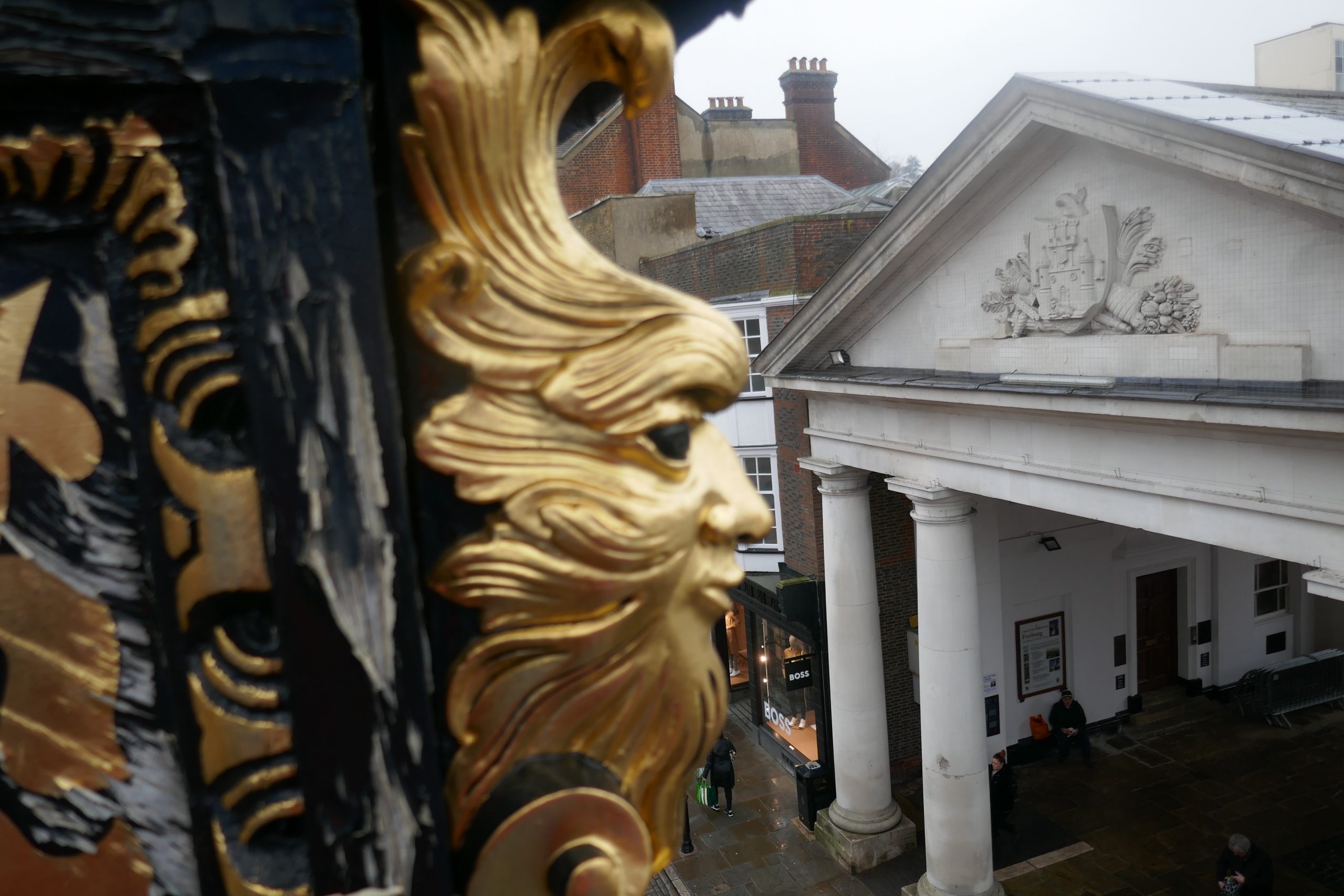
One of the four gold painted grotesques on the Guildhall clock looks down on Tunsgate. How many events have held their stare in more than three centuries presiding over the High Street?
By Hugh Coakley with contributions from Guildford’s Honorary Remembrancer Matthew Alexander and local historian David Rose
Erected during the reign of Charles II, the famous Guildhall clock has dominated Guildford’s High Street for more than three centuries.
And with scaffolding up at the Guildhall, The Dragon couldn’t resist the opportunity to get up close to reveal some of the hidden and rarely seen features.
Click on the images to get an enlarged view in a new window.
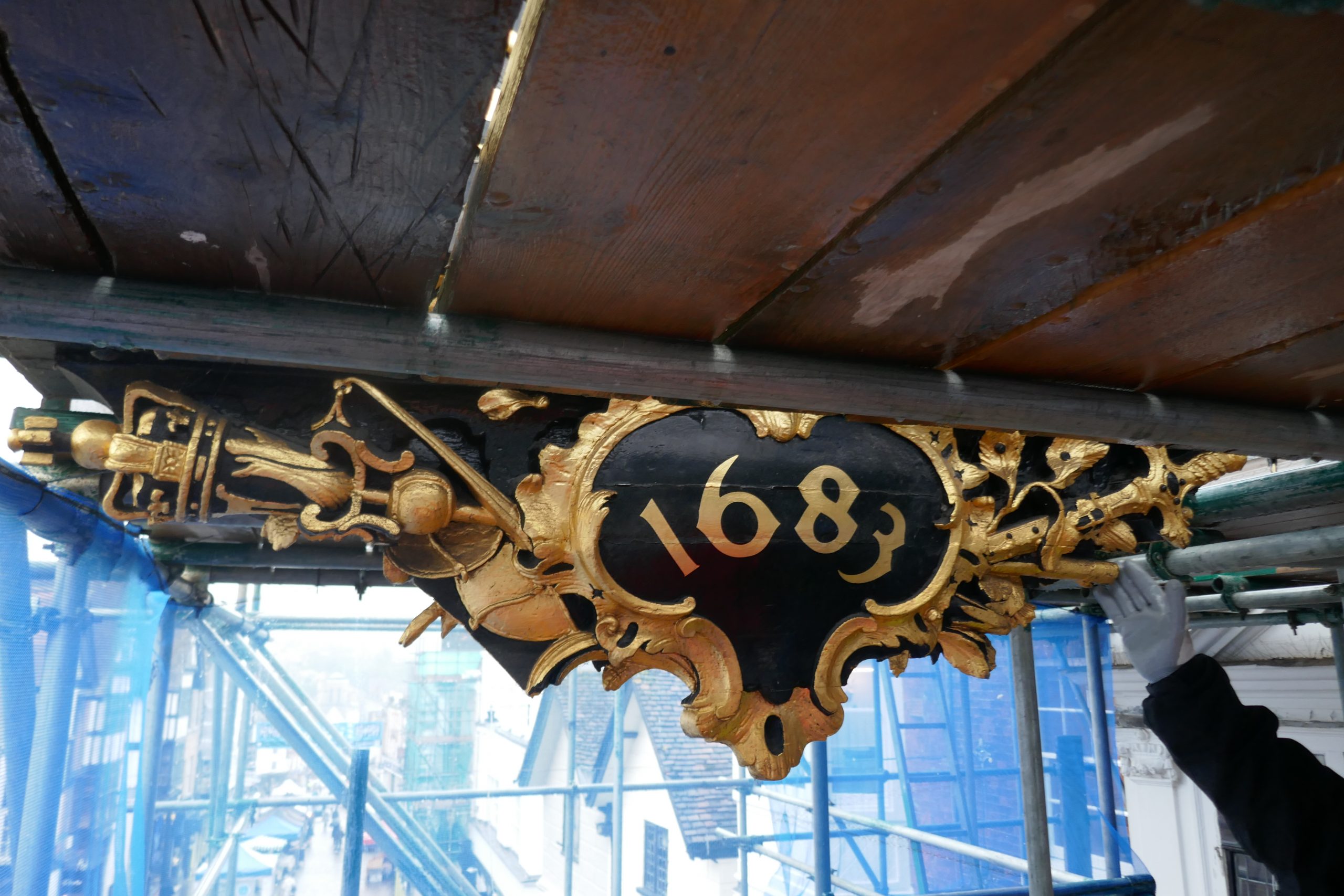
Close up on the lower part the clock showing the date. The paint is more weathered on the east face of the clock, despite the south-westerly prevailing wind.

The mace and the sword, either side of the date, represent the corporation’s authority to govern. There is also a similar mace and a sword in the pediment of the Tunsgate arch opposite, dating from 1818.
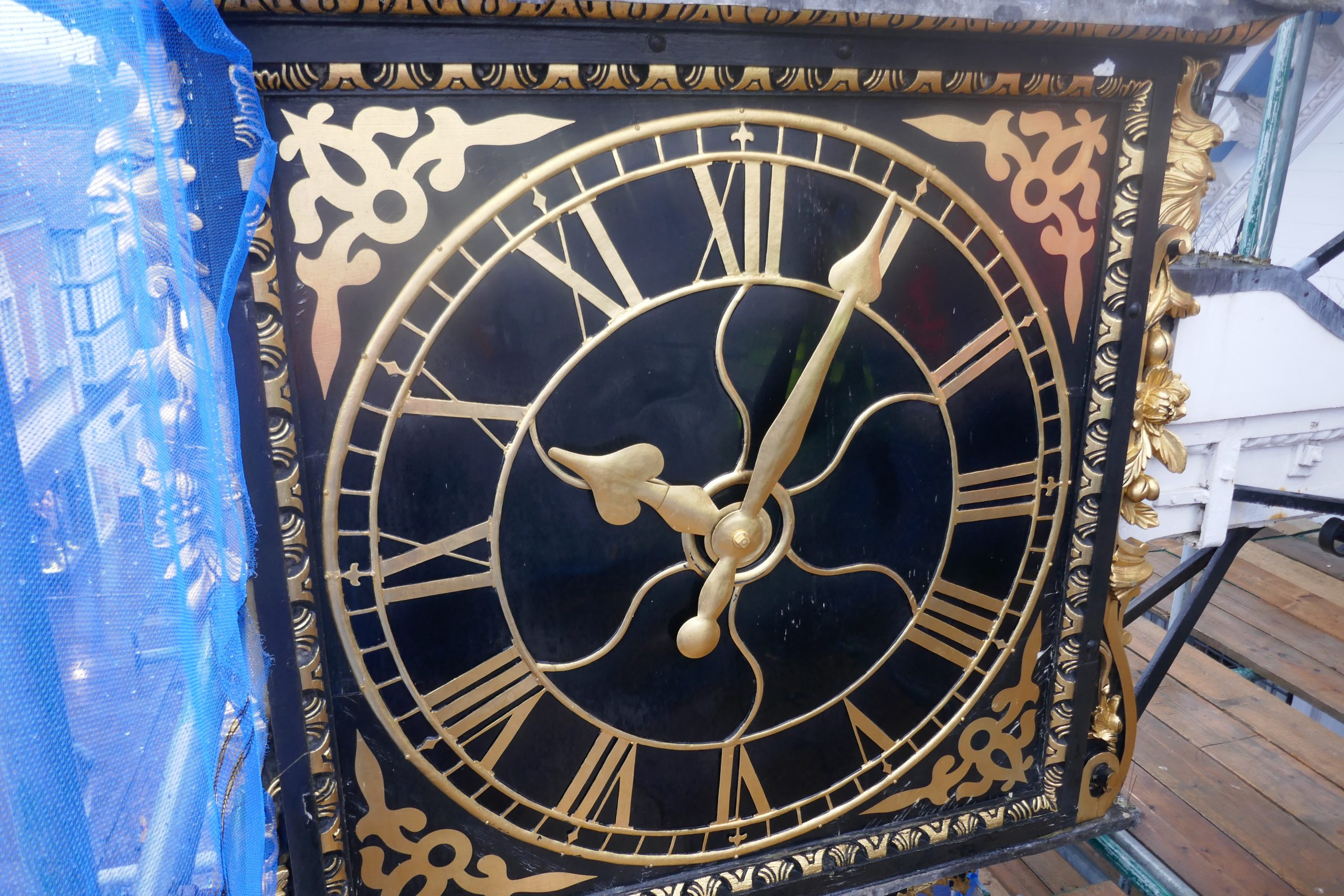
A close-up of the clock face. The face is thought to be copper sheet with gold leaf decoration. Other gold coloured decorations on the clock are only gold paint.
Matthew Alexander writes: “I remember being told that this [small access hatch between the clock dials] was used when there was a glazed clock dials that were lit behind by gas. However, going through the records I can’t confirm this. I did find an invoice of 1906 from the Guildford Electricity Supply Company for supplying electric lamps for this. It seems that the old copper dials were still in use at this date, so they could not have been backlit by gas.
“The council said they should be removed and stored in the Guildhall attic, and new iron-framed transparent dials installed.
“In 1931 the old copper dials were reinstated and it was the turn of the glazed dials to be kept in the attic.”
David Rose adds: “Matthew and I have spoken about this and I have my own mystery about this but now I may have the answer to it. In many picture-postcard views and other photos dating from the early 1900s and on into the 1920s, both faces of the clock look to me as if they are not glazed. Few pictures exist of the glazed dials showing their true transparency – see just one below. And I had presumed the copper dials were put back much earlier.
“It seems that the glazed dials soon become disliked by local people and perhaps the glass was “blacked out’ in some way to resemble the original faces, until therefore the pieces of the original copper faces were found and put back, as Matthew says was in 1931. But the images from the early 1900s into the 1920s might show the faces as blackened due to air pollution!
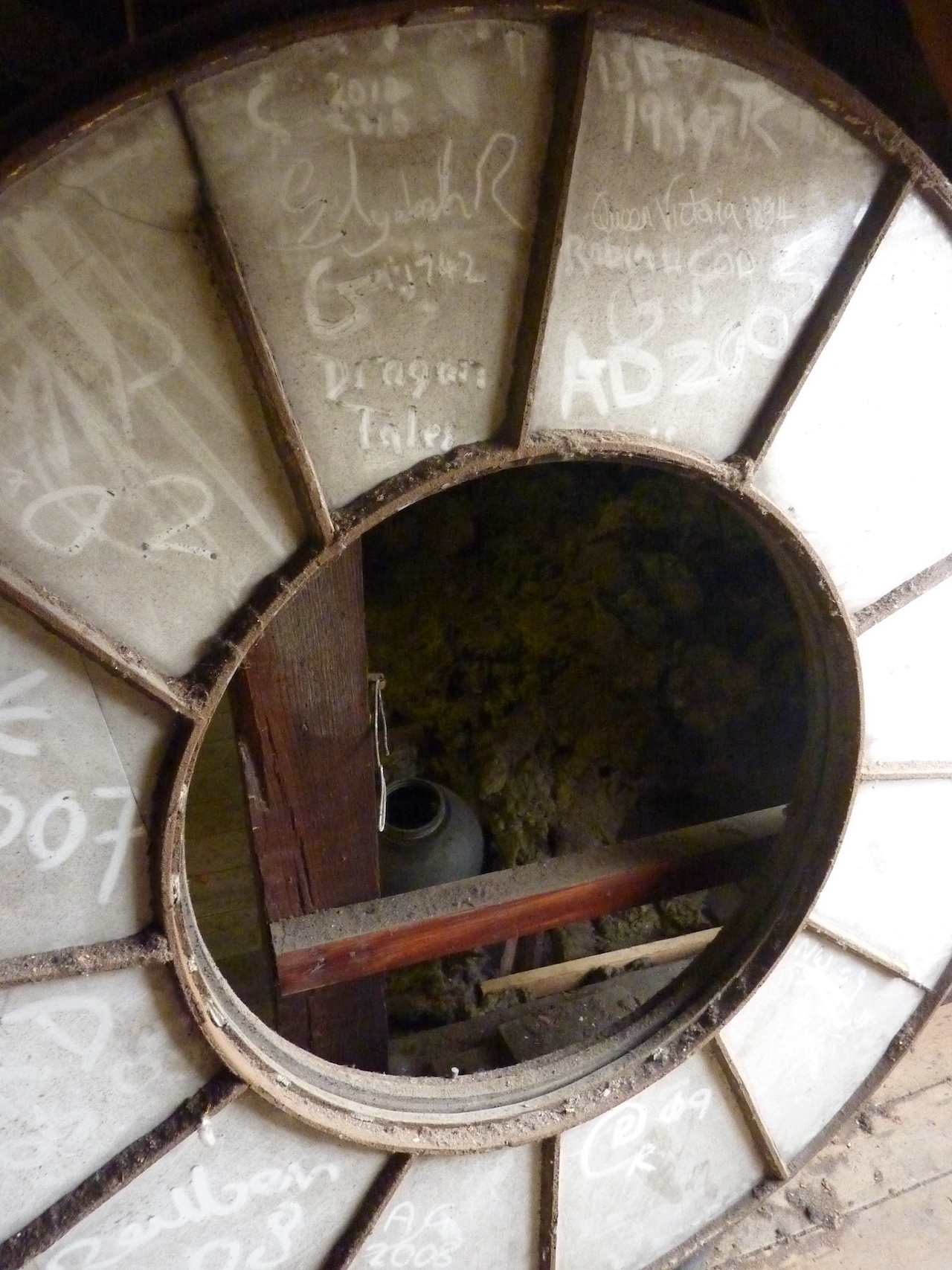
One of the two Guildhall clock’s glass dials stored in the Guildhall roof space. Over the years people have written words in the dust. Pictured here in 2013, someone has scrawled “Dragon Tales”. I wonder who that was? Picture: David Rose.
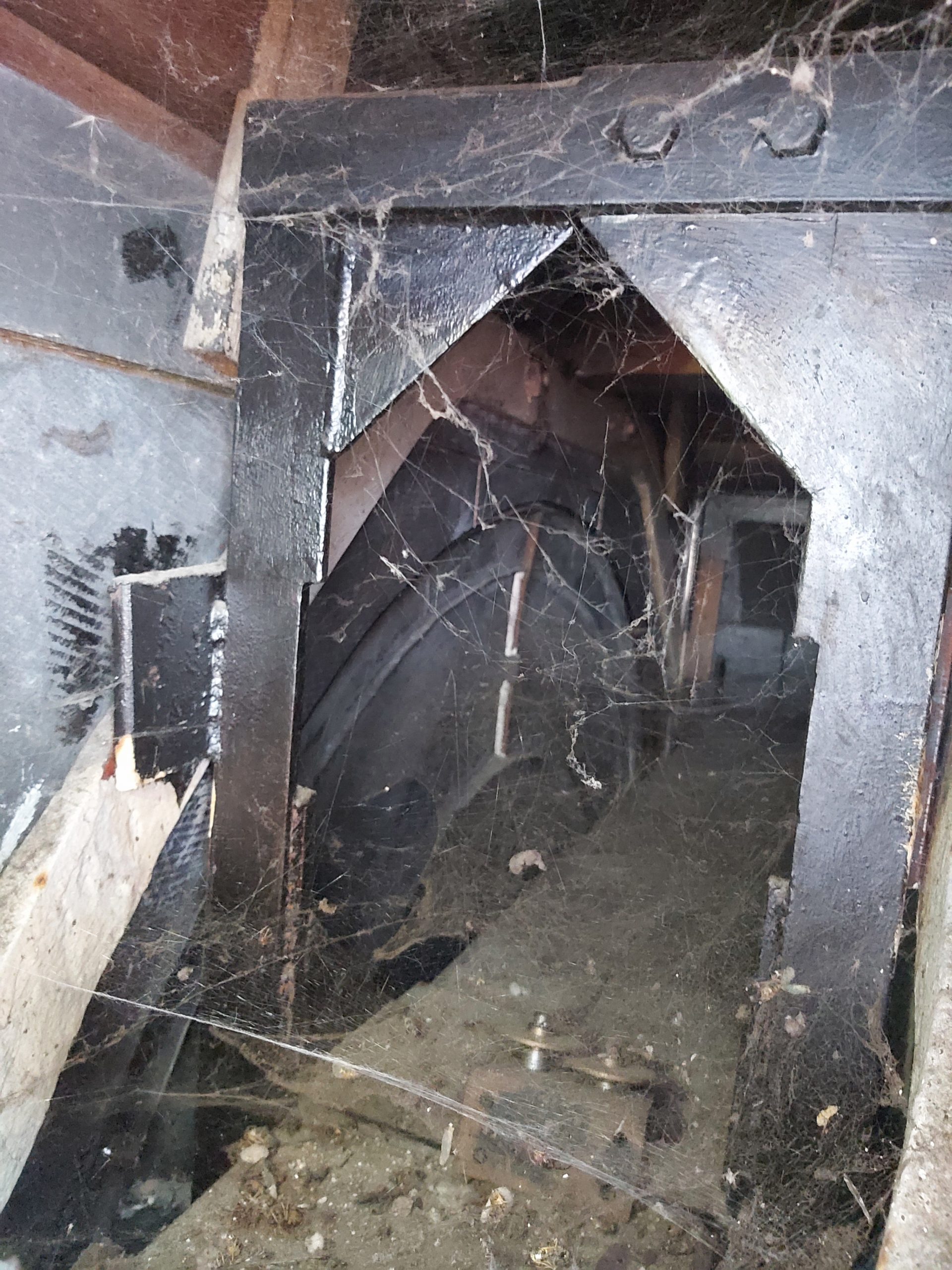
Peering through the tiny access hatch into the dusty space between the two clock faces. It shows the steel strengthening frame inserted around 20 years ago.

David Rose said: “The plaque on the Guildhall, prominent on the front of many old buildings, was a sign to early fire brigades the building was insured by the Sun insurance company. It is unusual to see one so highly painted. Beware of reproduction ones!” Read the fascinating history of fire marks in this link.
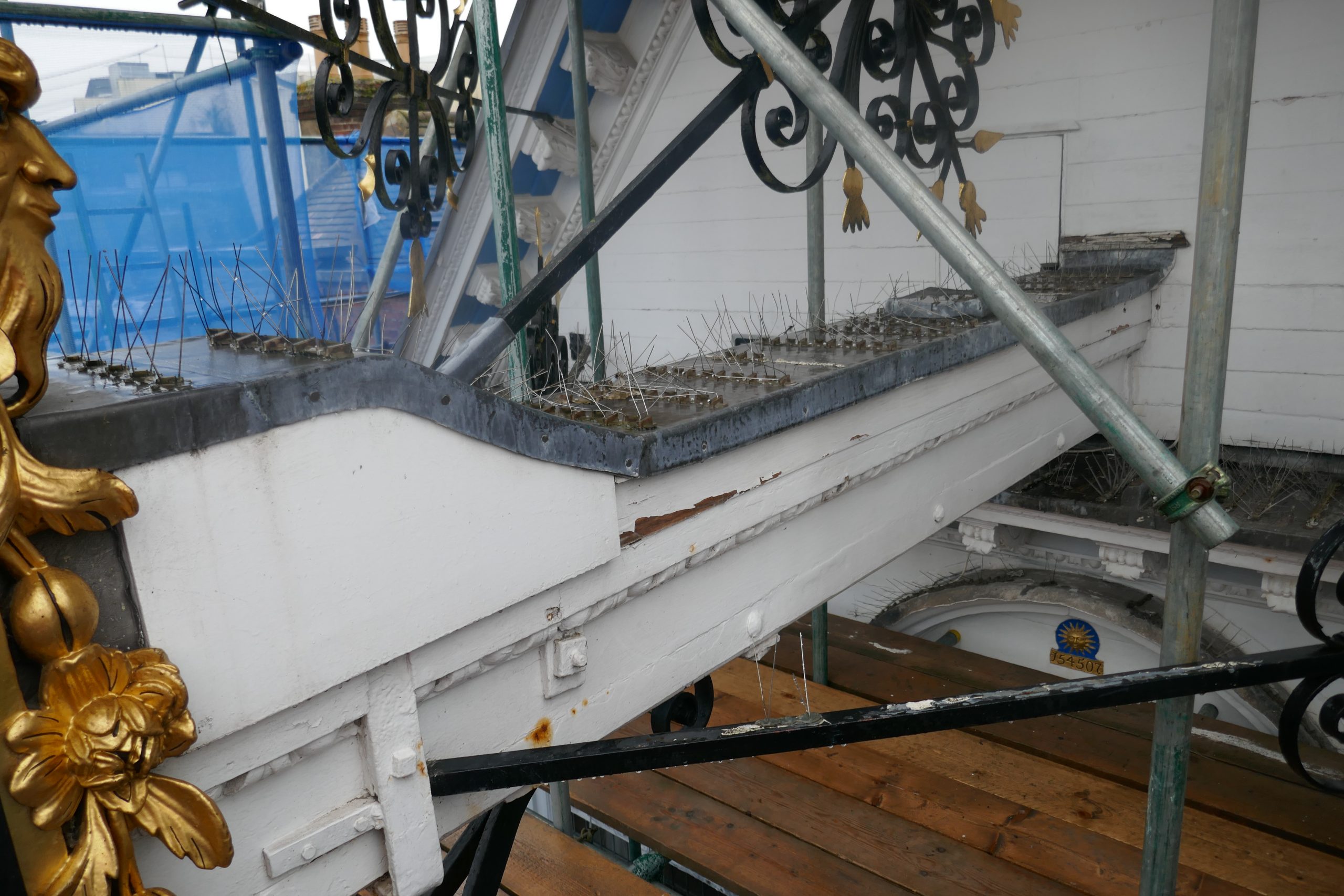
The clock is supported by a cantilever beam anchored inside the building. It was strengthened around 20 years ago with a steel beam above the existing beam.
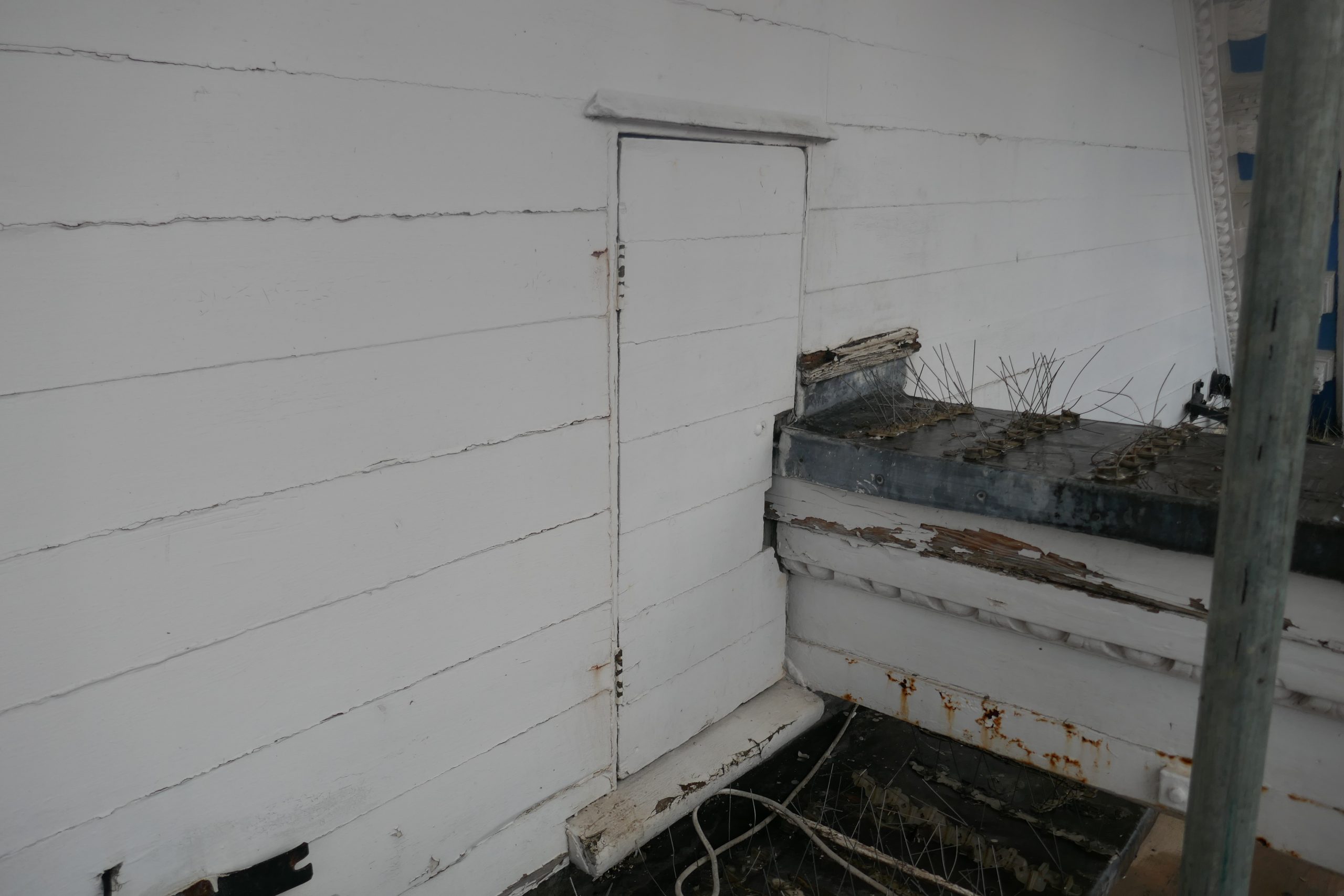
There is an access hatch from the inside of the Guildhall to the cantilever beam supporting the clock. It is not clear what this would be used for but, presumably, people would clamber out onto the beam to access the clock?
Matthew Alexander writes: “The bell was replaced in 1931. At first, the old one was going to be melted down to make the new one, but the borough council then decided to keep it as an exhibit. The old bell had probably been made in the Low Countries.
“There have been stories that the bell had originally come from St Catherine’s chapel or St Martha’s church, but this is very improbable. John Russell, in his History of Guildford 1801 records that a small bell inscribed ‘Sancta Katerina Ora Pro Nobis’ – St. Catherine pray for us- had been melted down in 1735. This may be the origin of these tales.”
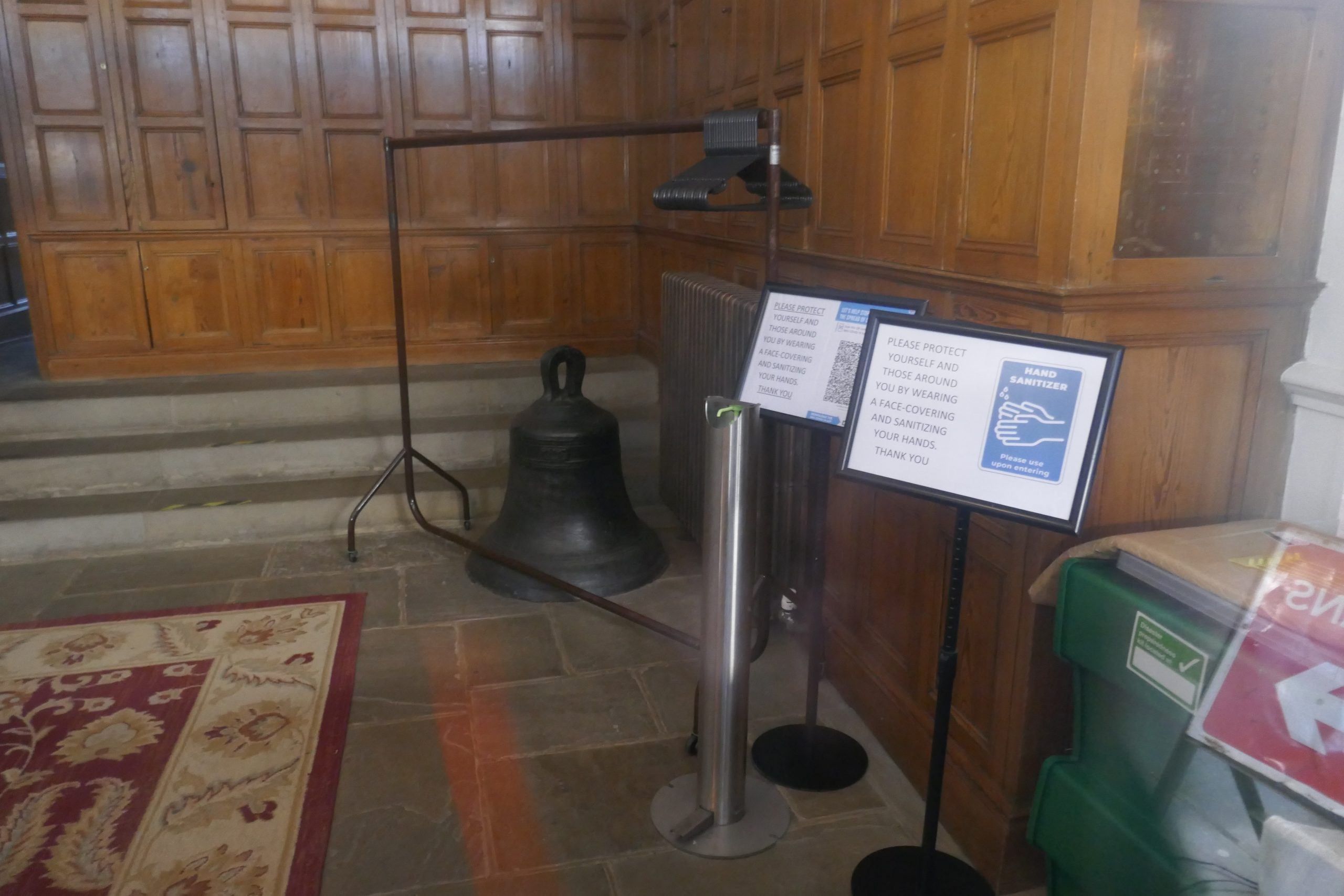
The old Guildhall bell was replaced in 1931 as it was apparently cracked. It now rests in the Guildhall lobby.
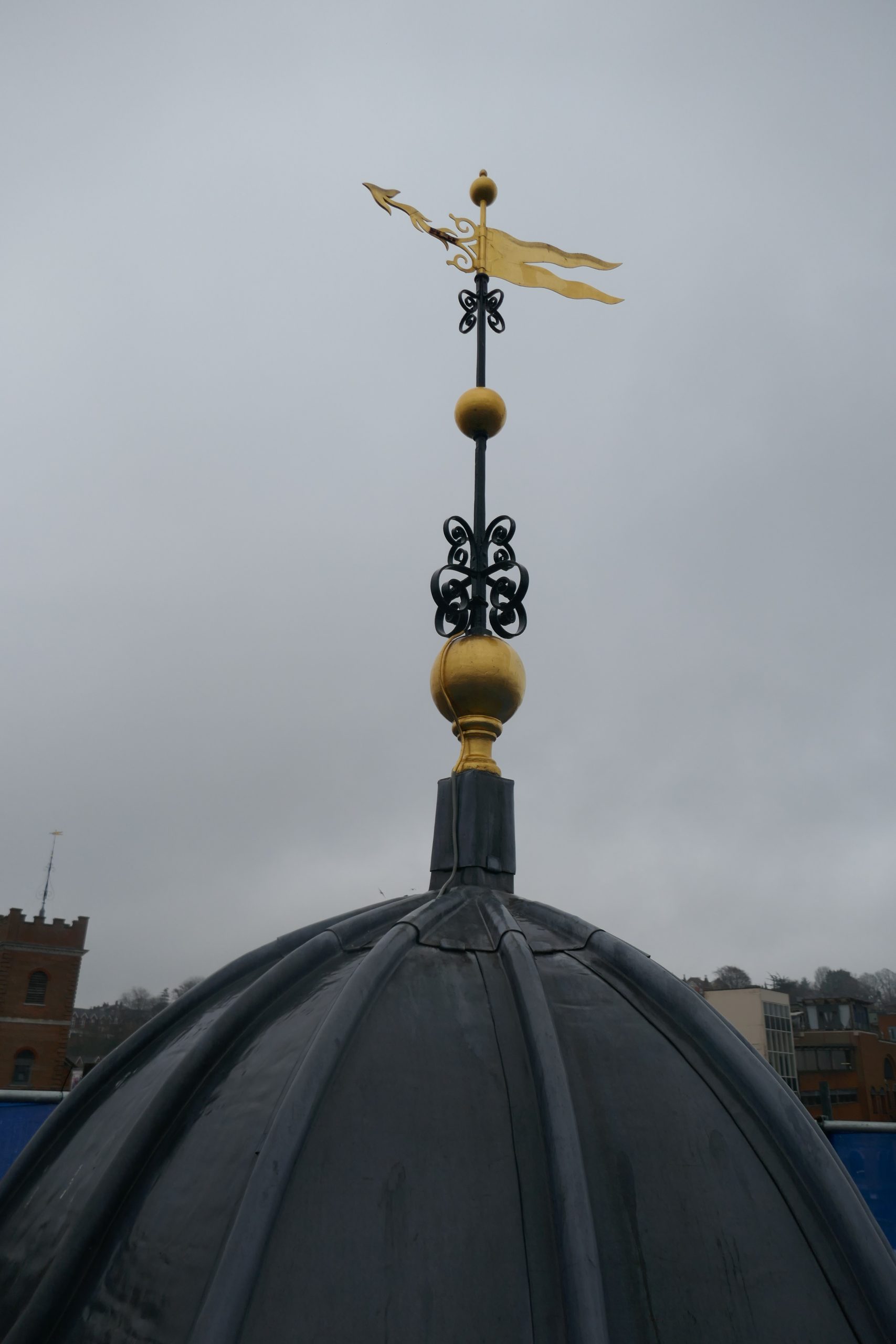
The weathervane on top of the Guildhall lead-covered cupola with the traditional swallow-tail pennant and an arrow pointer. Its like can be found on many other grand buildings of the 16th and 17th centuries said Matthew Alexander.
Mark Graham, Guildford Borough Council’s building surveyor, is responsible for the work. He is being advised on the scaffold and timber repairs by Alistair Piper from Cooper & Withycombe.
Mark said: “The scaffolding gives us a great opportunity to inspect and fix what is needed. You only get the opportunity about once in every 10 years to have a really good look.”
The work on the Guildhall, including repairs to woodwork, windows, lead work, iron work and redecoration as well as work on the famous clock, is managed by Gavin Saunders from the contractor, ASH, with a team of up to 10 people.
Gavin said: “For its age, the Guildhall is in good condition. The repairs are mainly superficial, nothing structural as far as we can see.
“But it needs constant maintenance as all old buildings do. It’s been well maintained but it’s an ongoing job.”
Carpenter Aaron Keeley, said: “It’s a nice job to work on, fiddly work but interesting.
“I’m born and bred in Guildford. It’s great to work on a historic building in my home town.”
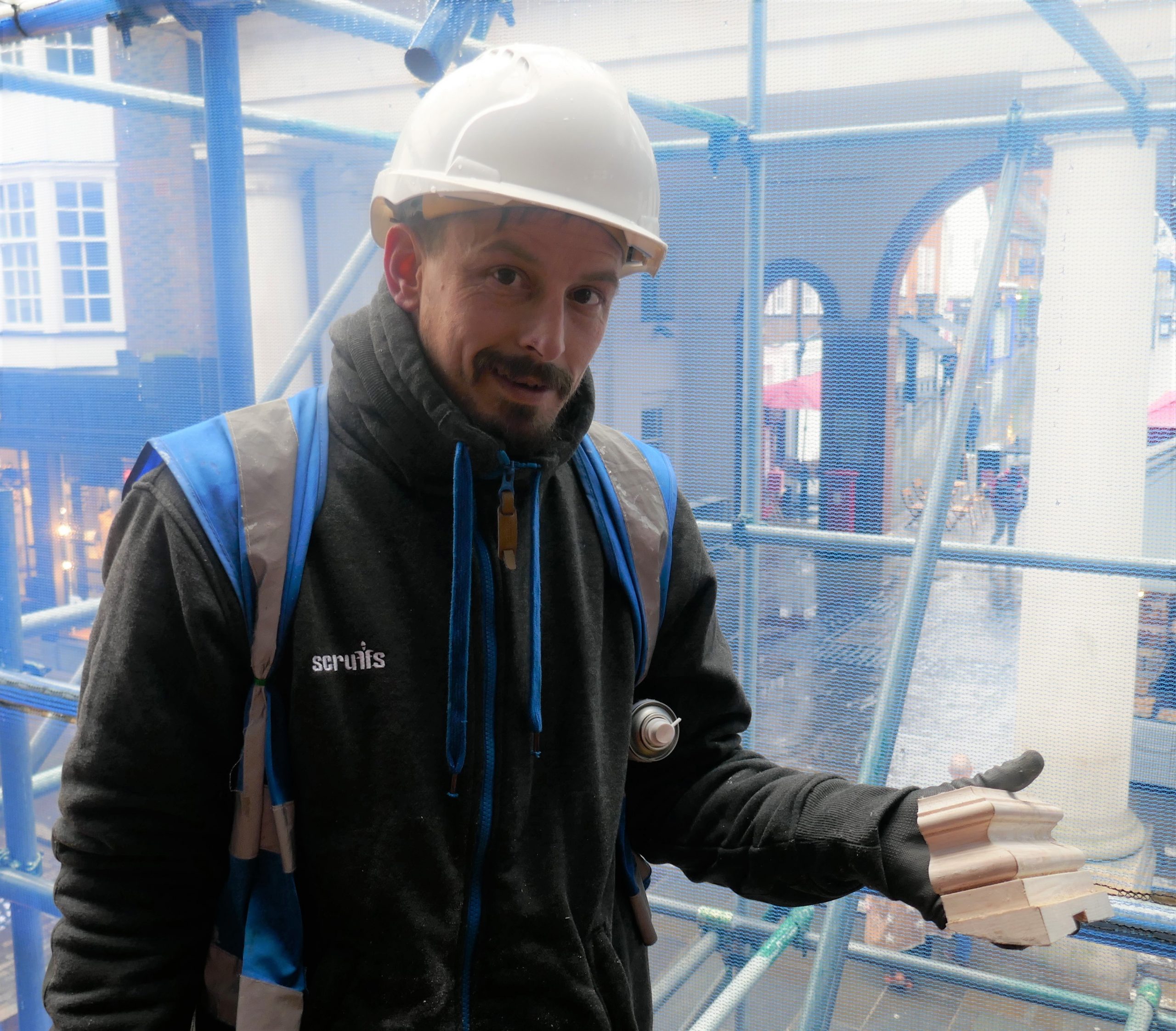
Carpenter Aaron Keeley showing a carved hardwood piece which will replace a rotten section of the Guildhall facade.

The new bespoke shaped piece is screwed into position. The screw holes are filled with hardwood plug giving, once painted, an invisible fixing.
At the back of the Guildhall, the tunnel between the Guildhall courtroom and the former police station in North Street can still be seen.
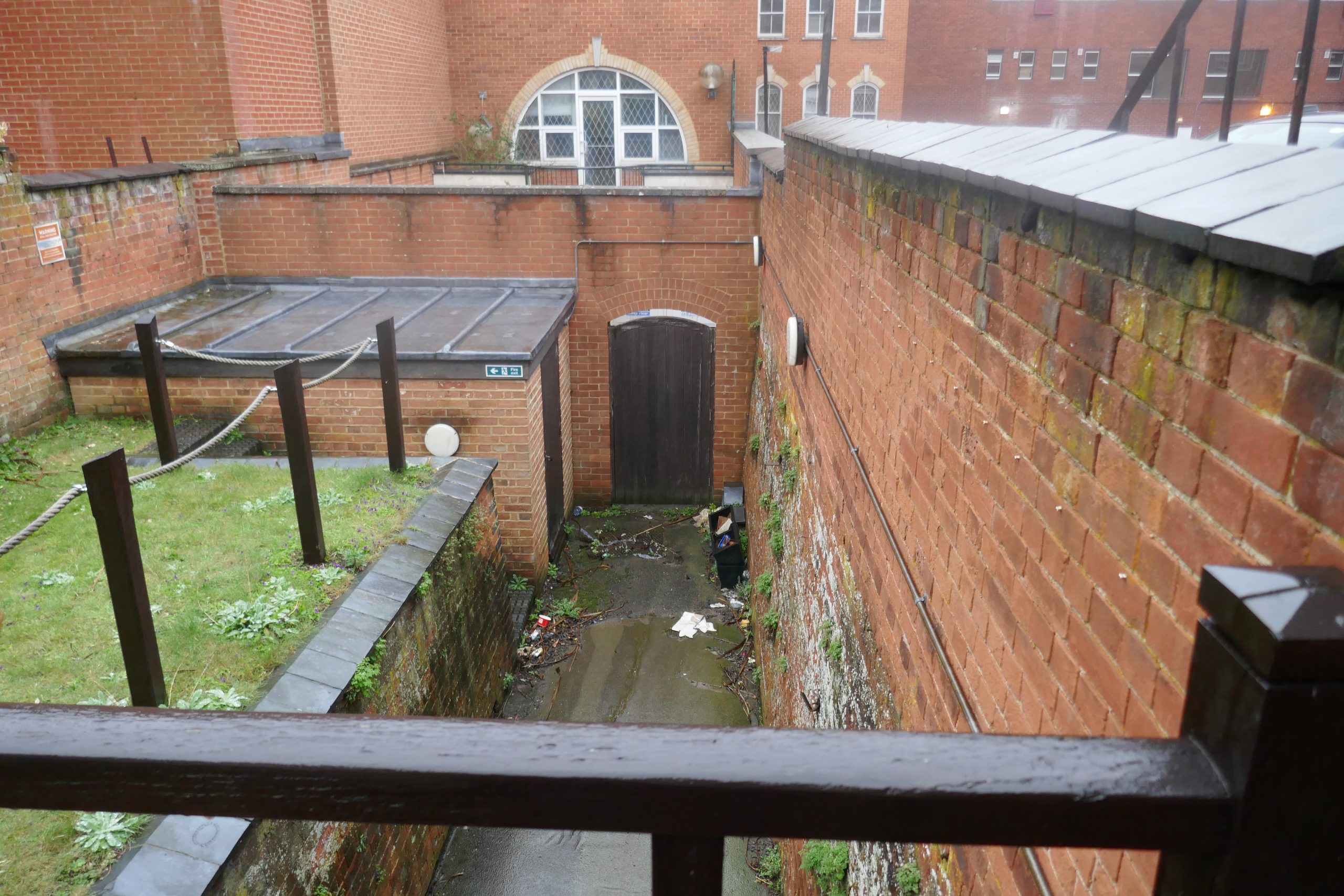
The sunken walkway between the Guildhall courtroom and the back of the North Street police cells (formerly a Laura Ashley shop).
David Rose said: “The covered walkway between the Guildhall and the police station in North Street was probably last used by a defendant going to trial when the police station (originally Guildford Borough Police) closed in the 1950s and moved in with the former Surrey Constabulary police station in Woodbridge Road.”
Matthew Alexander said: “There were trials held in the Guildhall as late as the late 1970s, but by then the old police station in North Street was mainly used by the magistrates and I doubt that the cells at the back were still in use.”
And lastly, an unexpected hidden aspect of the visit up the scaffolding was to see graffiti on the roofs. We are told it is “freerunners” making use of the wonderful spread of different roofs and levels, frighteningly high above solid ground.
They have caused some damage to the roof tiles which is bad. But I can’t help but have a quiet admiration for their nerve to run around the roofs, presumably in the dark. Even the thought makes me quake.
Here, David Rose presents some vintage photos of the Guildhall and its clock, including those of repairs and renovation over the years
Click on images and their captions to enlarge in a new window.

Guildford High Street in about the 1870s and a view of the Guildhall clock. Picture Guildford Institute collection.
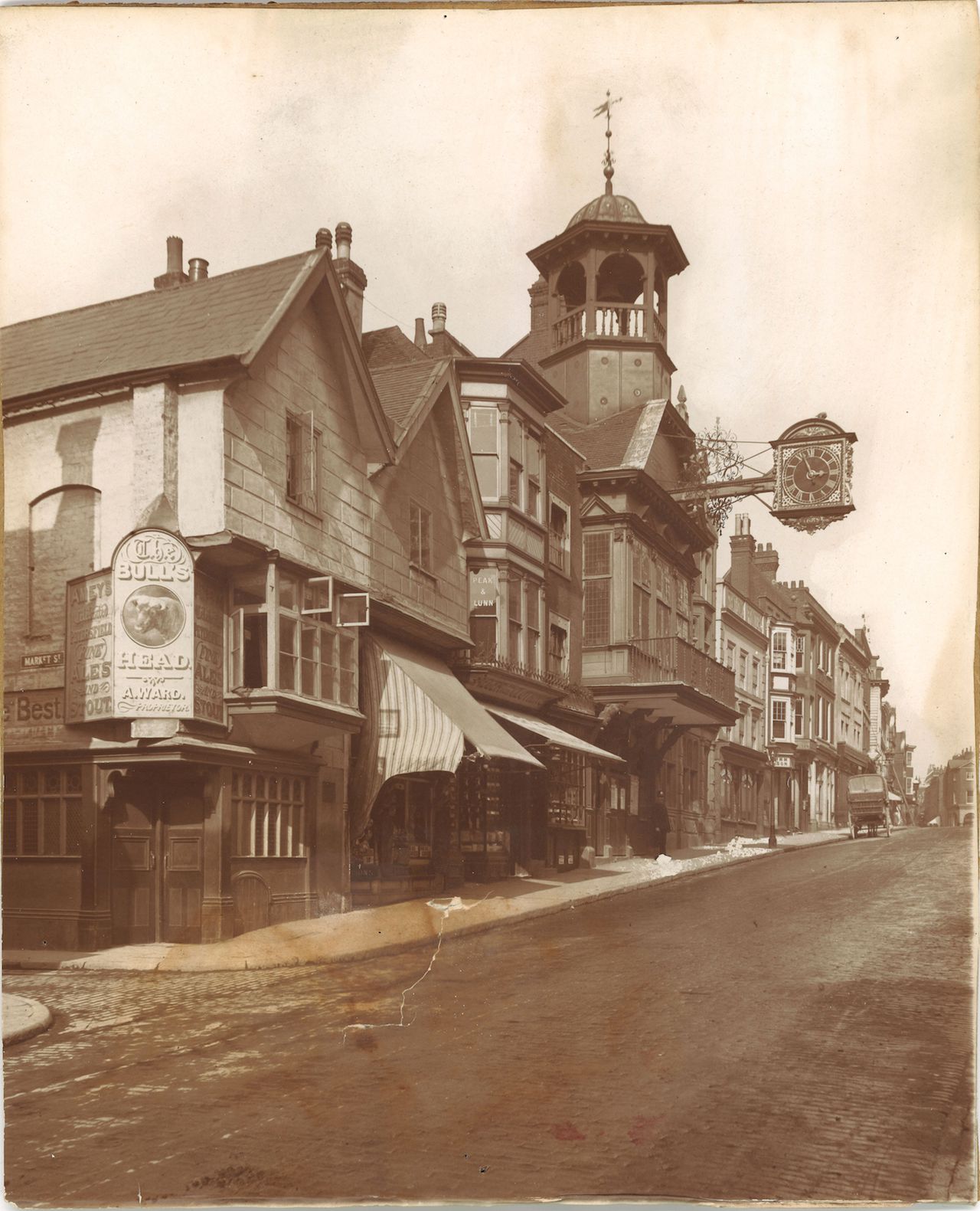
A view of the Guildhall and its famous clock in about the 1880s. Picture: Guildford Institute collection.

Power to the Guildhall! The change from gas lighting to electric lighting at the Guildhall is thought to have been around 1906. This photo shows the courtroom with gas mantles and appears to date from the 1890s or earlier.
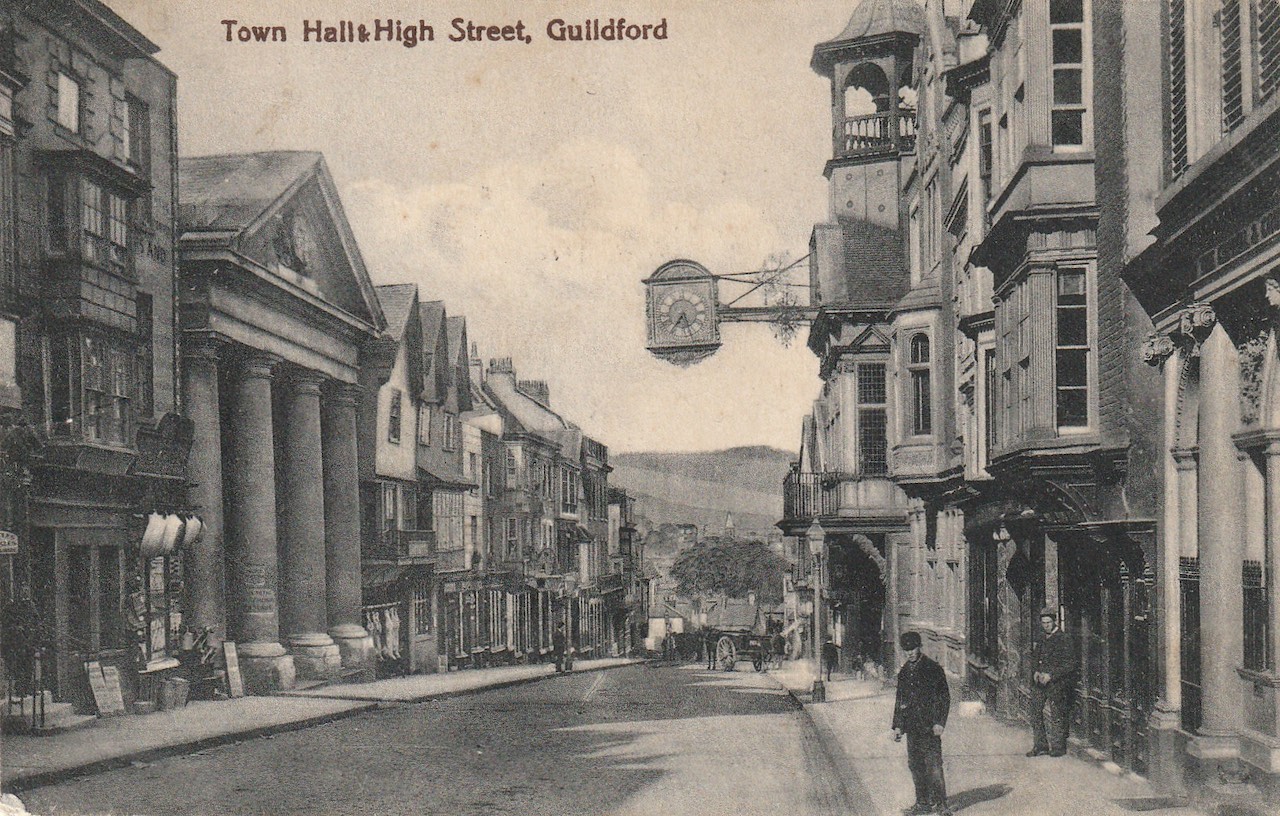
It appears that for a few years at the end of the 19th century or early 20th century both copper clock faces were removed and glass dials were installed and illuminated at night. It seems this didn’t last long as it is said the people of Guildford didn’t like the change. Although this postcard was published in the early 1900s, the photo may have been taken a few years earlier. You can clearly see the transparency of the glass dial on this side of the clock.
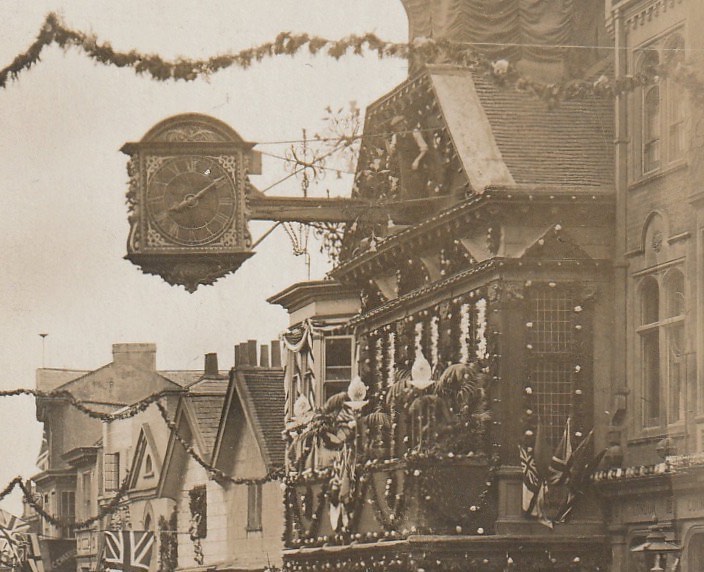
Likely to be at the time of Guildford’s celebrations for the coronation of George V in 1911, the Guildhall is suitably decorated and note the man standing on the beam. This is an enlargement from a picture postcard courtesy of Chris Quinn and is an example of the clock face that shows the glass dials may have been ‘blacked out’ somewhat. Or another theory, they just became very dirty due to pollution in the air!

Stages of the removal of the Guildhall clock for repairs? A cutting from the Guildford City Outlook magazine. Date unknown. Comparing it to the 1931 cutting and the 1940 photo, the scaffolding looks different?
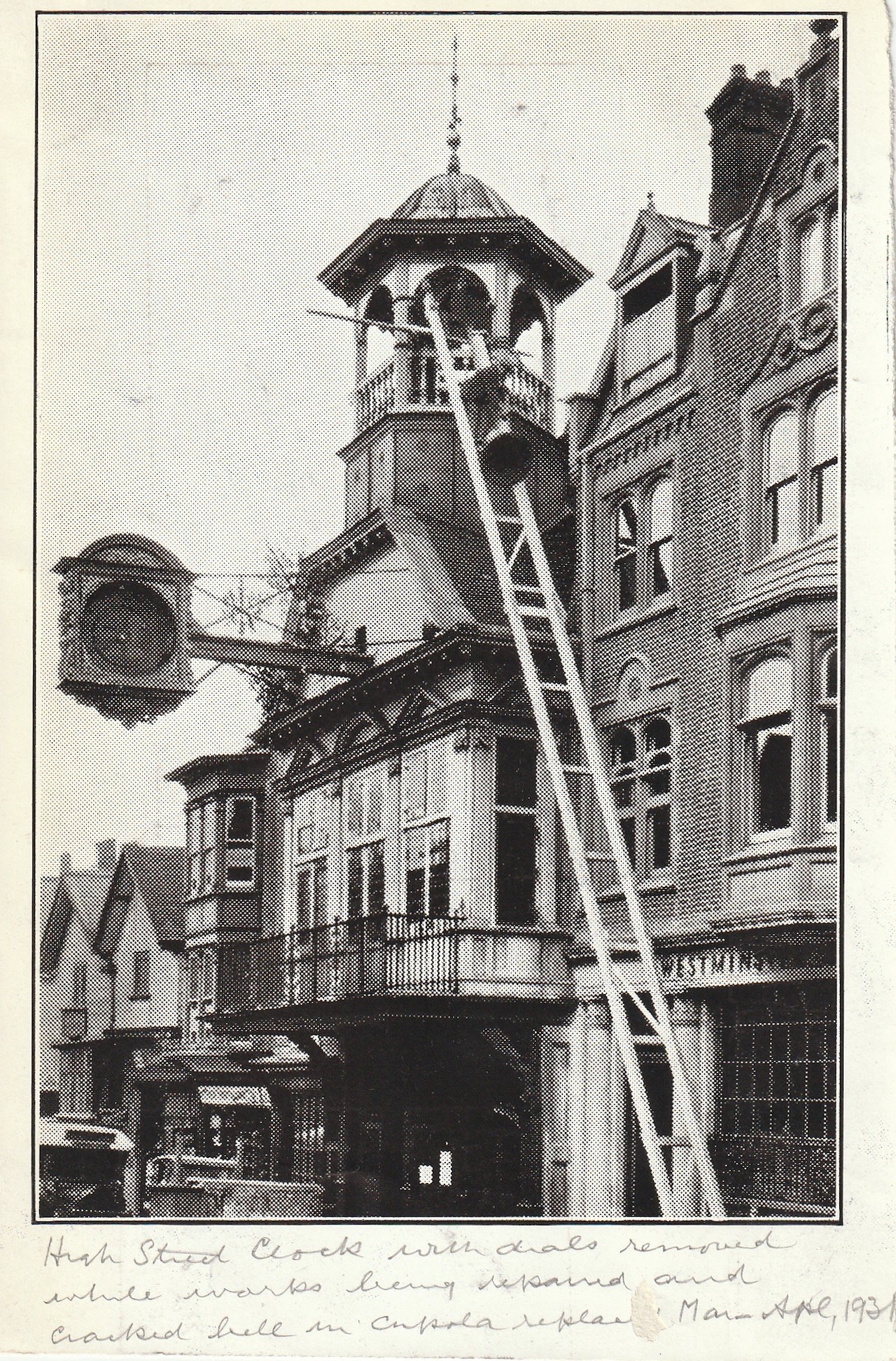
It’s still 1931 and this either shows the cracked bell bring brought down (by one man it looks!) or the new bell being pulled up. There is another man in the bell tower perhaps supervising?

The Guildhall clock was removed in October 1940 in fear it might be damaged by Nazi bombs. It is now believed it was stored in the strong room within the crypt of the then partially built Guildford Cathedral. It was soon put back when the war ended in 1945. Picture: Terence Patrick collection.
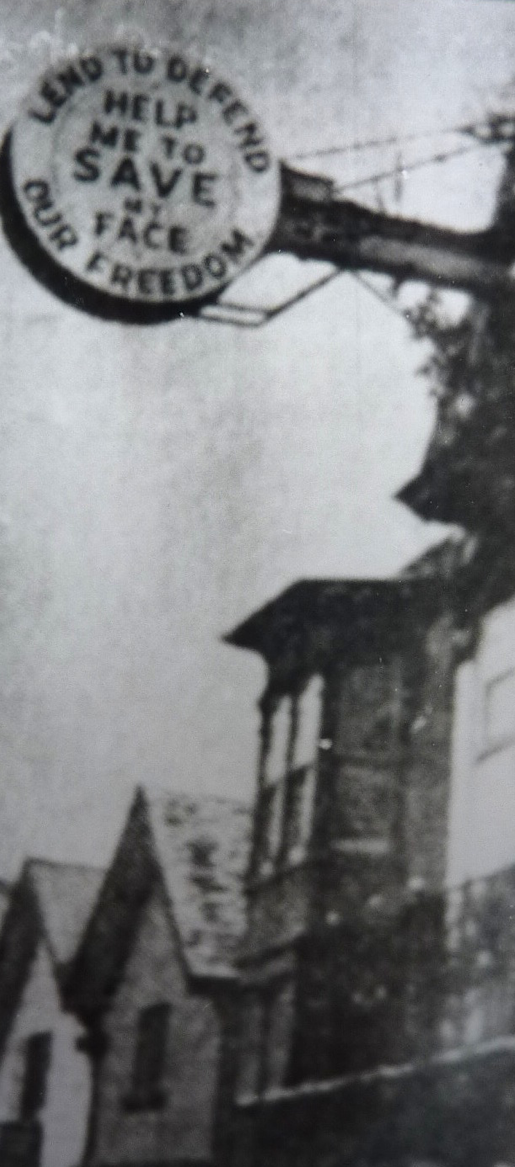
Once the Guildhall clock had been removed for safe storage during the Second World War, the end of the beam was used to display a kind of message board for the war effort.
See also Restoration Work Starts On Guildford’s Iconic Guildhall And Town Clock
Responses to Photo Feature: The Guildhall Clock, A Close Look at Some Hidden and Rarely Seen Aspects
Leave a Comment Cancel replyPlease see our comments policy. All comments are moderated and may take time to appear.
Recent Articles
- Guildford Institute’s Crowdfunding Project for Accessible Toilet in its New Community and Wellbeing Centre
- Letter: Guildford – Another Opportunity Missed?
- Letter: GBC’s Corporate Strategy – Where Is the Ambition?
- My Memories of John Mayall at a Ground-breaking Gig in Guildford Nearly Six Decades Ago
- Westborough HMO Plans ‘Losing the Heart of the Street’ Says Resident
- College Invests to Boost Surrey’s Economy and Close Digital Skills Gap
- Community Lottery Brings Big Wins for Local Charities
- GBC Housing Plan Promises ‘A Vibrant Urban Neighbourhood’ Near Town Centre
- Hospital Pillows ‘Shortage’ at the Royal Surrey
- Updated: Caravans Set Up Camp at Ash Manor School


Recent Comments
- Ian Macpherson on Updated: Main Guildford to Godalming Road Closed Until August 1
- Sara Tokunaga on GBC Housing Plan Promises ‘A Vibrant Urban Neighbourhood’ Near Town Centre
- Michael Courtnage on Daily Mail Online Reports Guildford Has Highest-paid Council Officer
- Alan Judge on GBC Housing Plan Promises ‘A Vibrant Urban Neighbourhood’ Near Town Centre
- John Perkins on GBC Housing Plan Promises ‘A Vibrant Urban Neighbourhood’ Near Town Centre
- S Collins on GBC Housing Plan Promises ‘A Vibrant Urban Neighbourhood’ Near Town Centre
Search in Site
Media Gallery
Dragon Interview: Local Artist Leaves Her Mark At One of England’s Most Historic Buildings
January 21, 2023 / No Comment / Read MoreDragon Interview: Lib Dem Planning Chair: ‘Current Policy Doesn’t Work for Local People’
January 19, 2023 / No Comment / Read MoreA3 Tunnel in Guildford ‘Necessary’ for New Homes, Says Guildford’s MP
January 10, 2023 / No Comment / Read More‘Madness’ for London Road Scheme to Go Ahead Against ‘Huge Opposition’, Says SCC Leader
January 6, 2023 / No Comment / Read MoreCouncillor’s Son Starts Campaign for More Consultation on North Street Plan
December 30, 2022 / No Comment / Read MoreCounty Council Climbs Down Over London Road Works – Further ‘Engagement’ Period Announced
December 14, 2022 / No Comment / Read MoreDragon Interview: GBC Reaction to the Government’s Expected Decision to Relax Housing Targets
December 7, 2022 / No Comment / Read MoreHow Can Our Town Centre Businesses Recover? Watch the Shop Front Debate
May 18, 2020 / No Comment / Read More



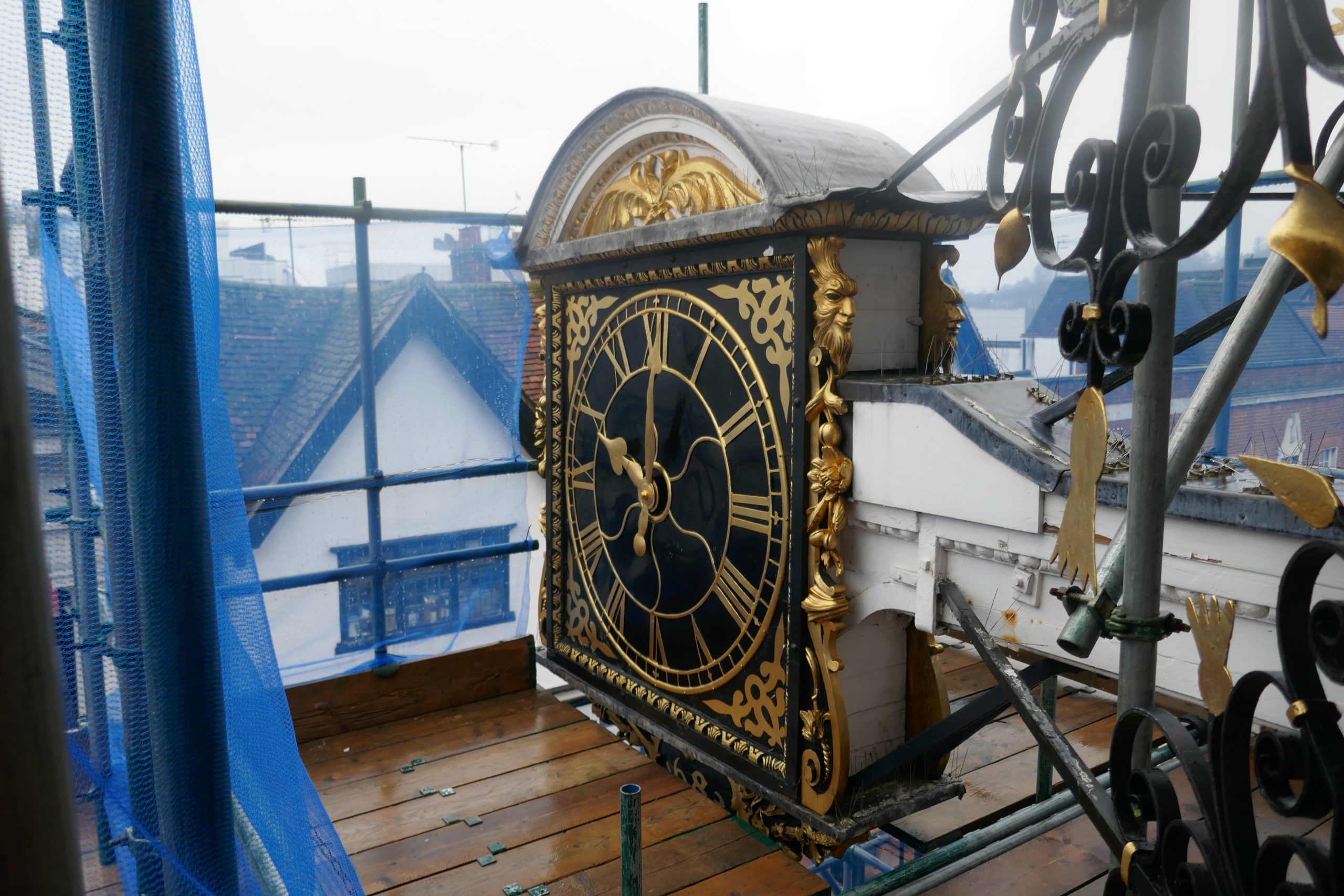
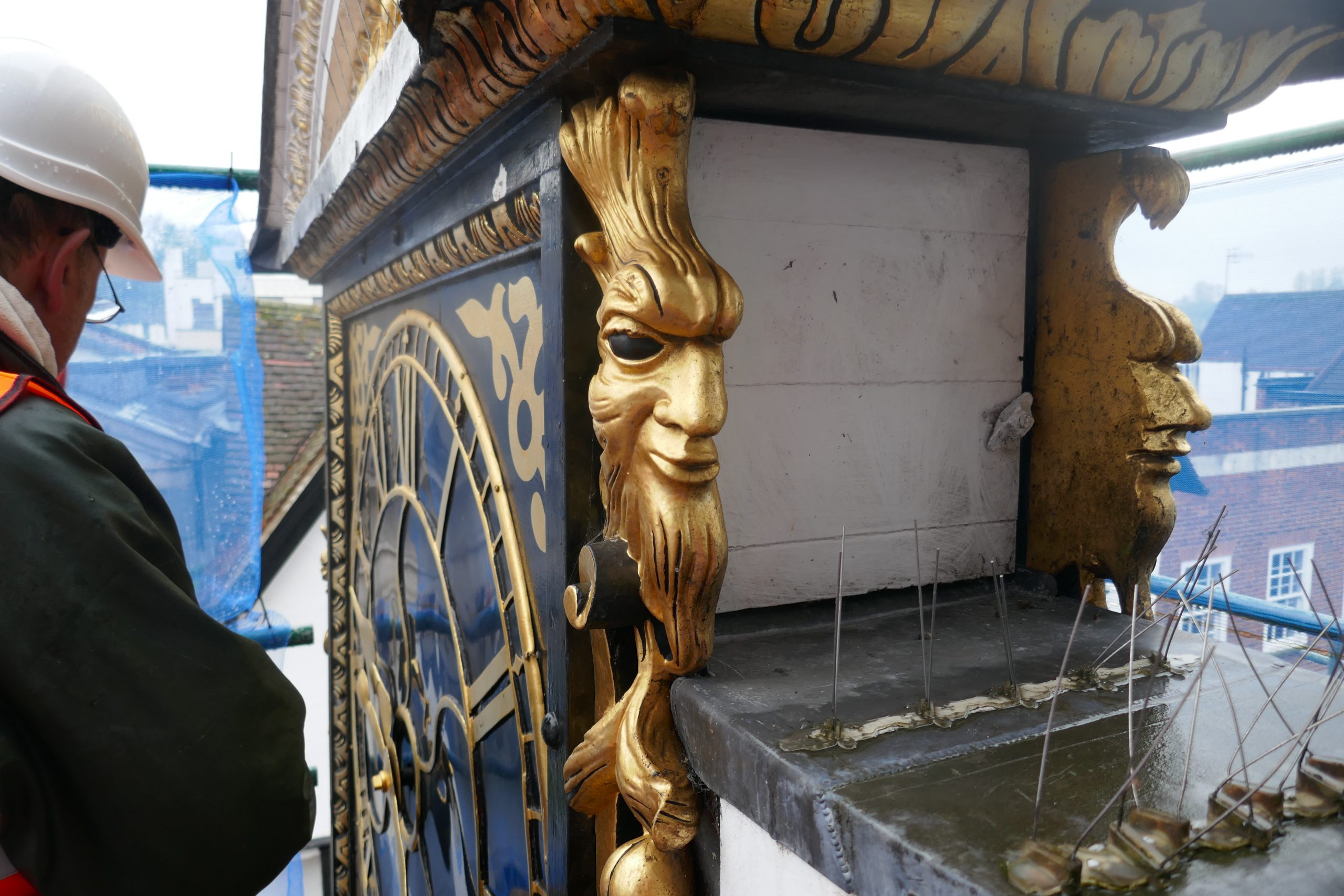



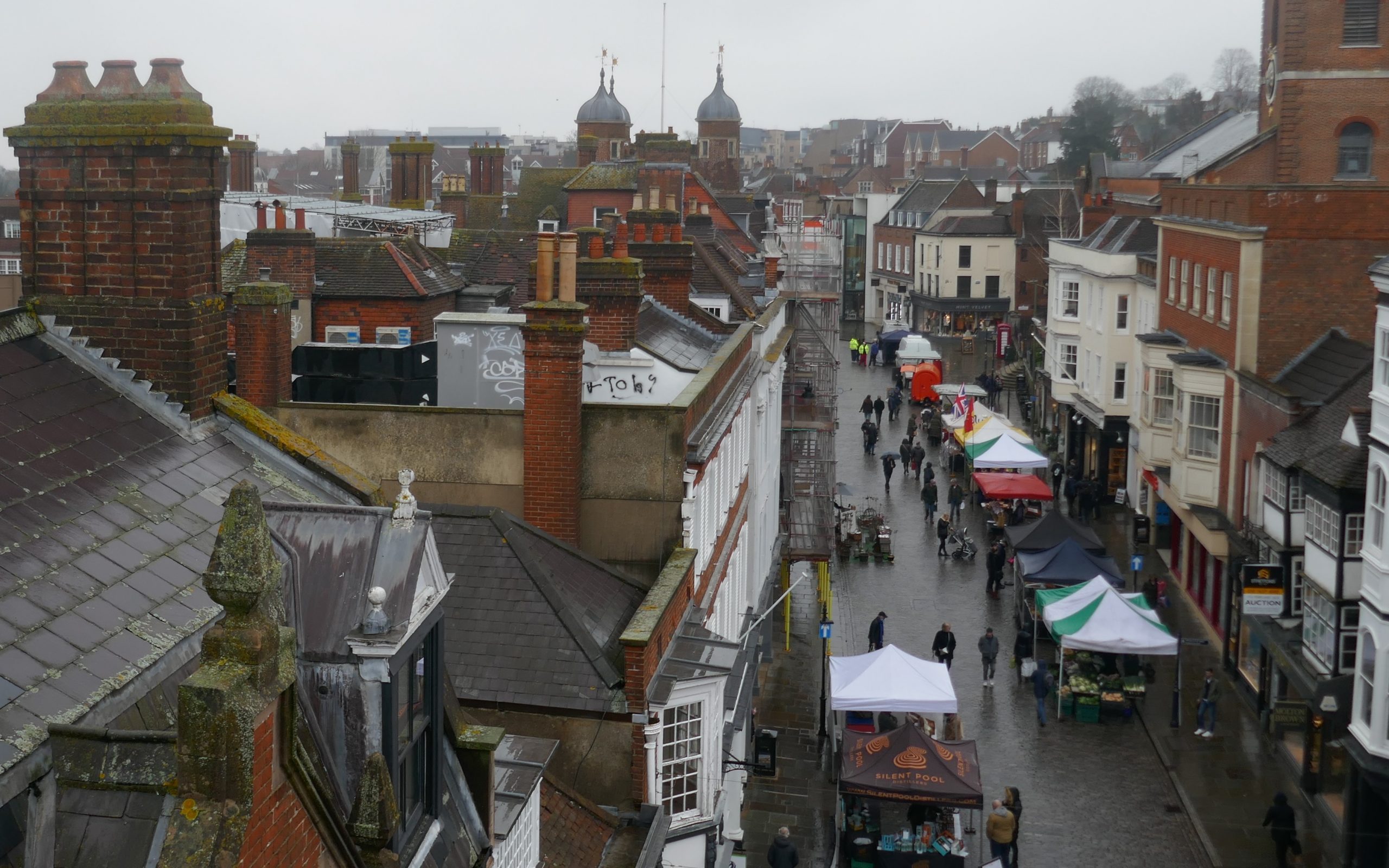
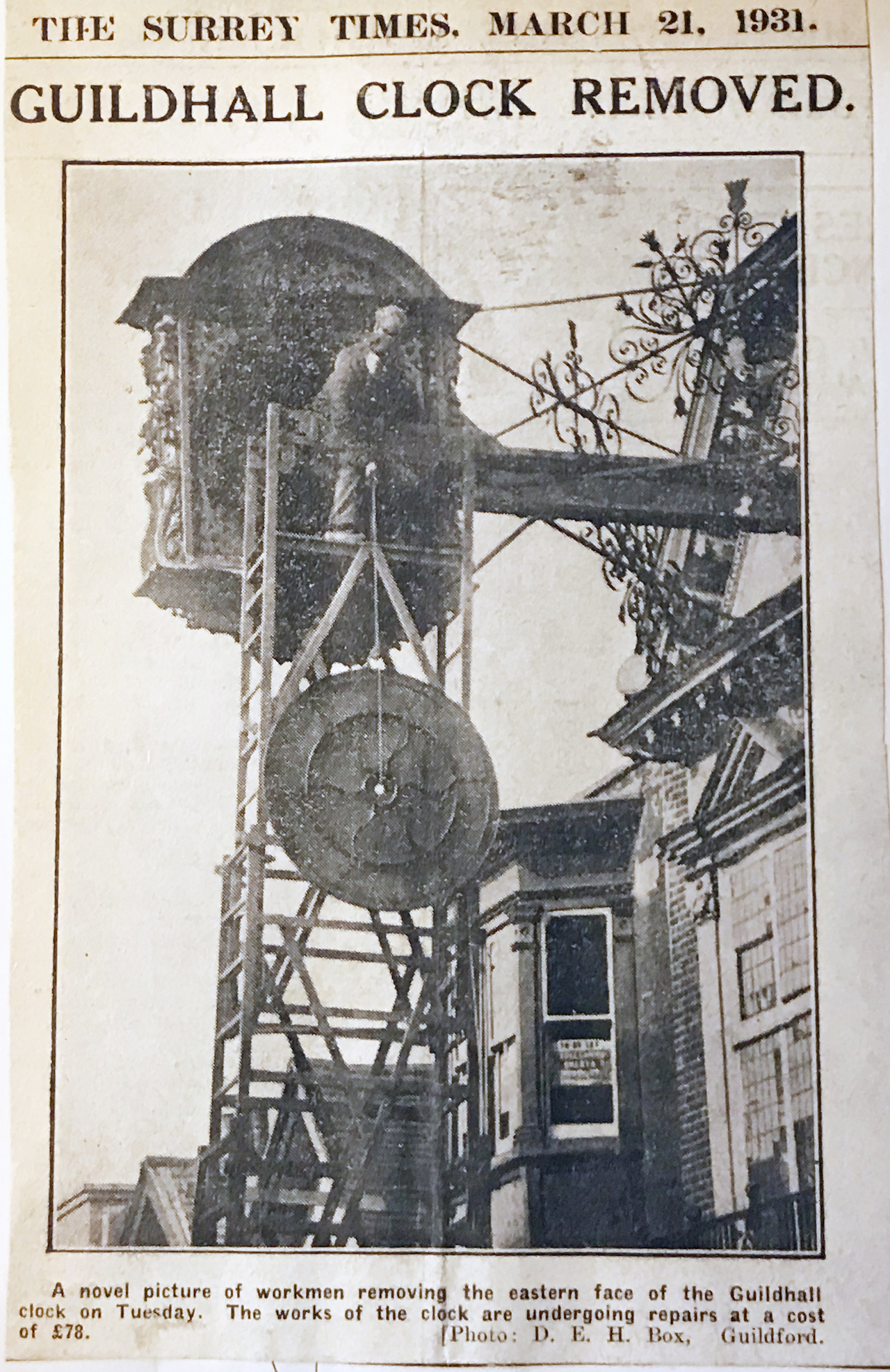
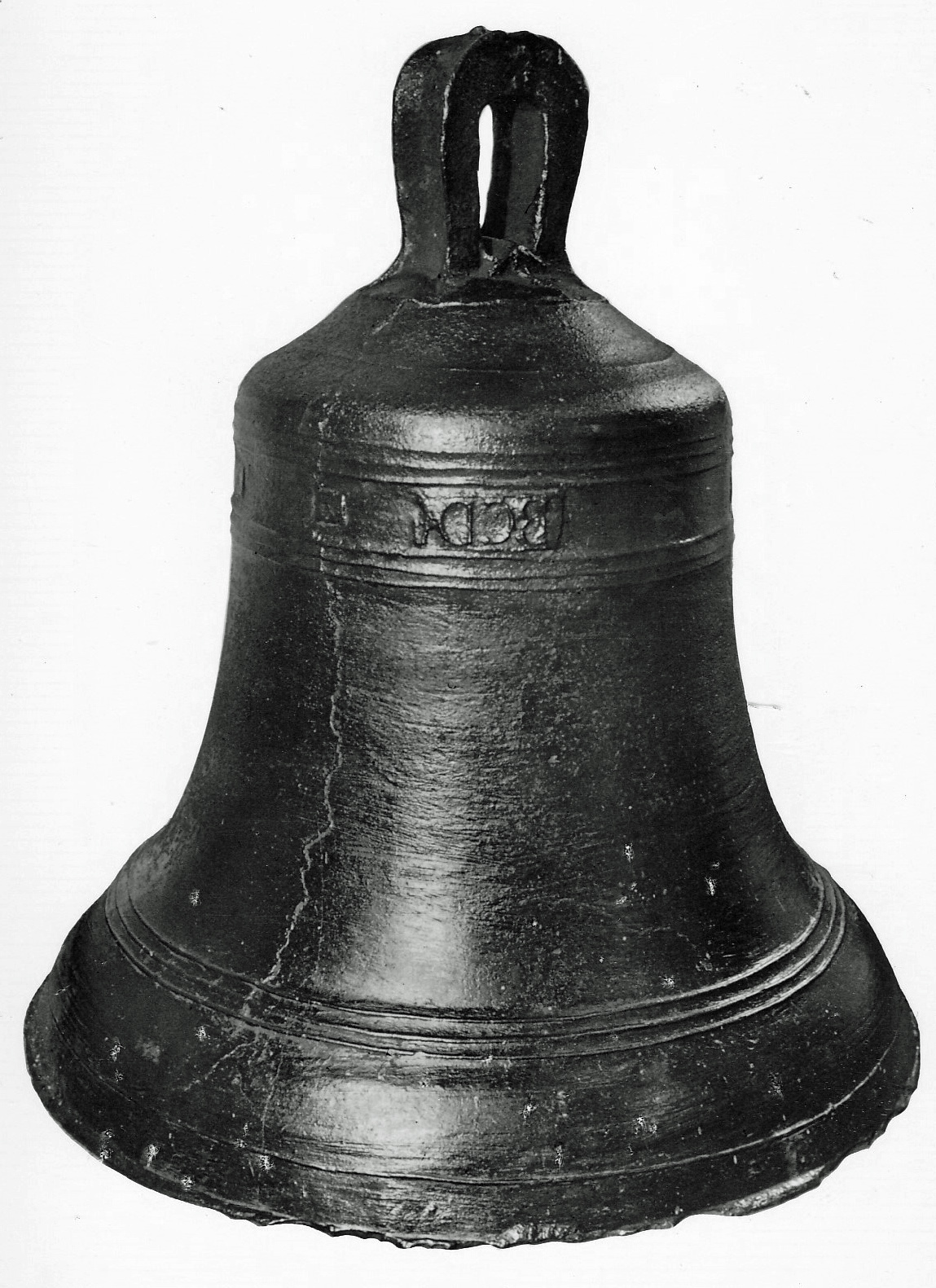






Maureen Shettle
March 12, 2022 at 4:47 pm
With regard to the fire mark. It is an original mark with a policy dating back to the 18th century. It was repainted in its correct colours about 10 to 20 years ago following a previous restoration, when someone had decided for reasons best known to themselves to paint it all over in black so that it was virtually impossible to tell what it actually was.
The purpose of the mark in Guildford would have been mainly to act as an advertisement as there were no insurance fire brigades in Surrey unless you count areas near the Thames like Lambeth and Southwark and there was no local authority fire brigade in Guildford until 1863. However, Guildford did maintain two or more fire engines from the late 17th century onwards. Any fire near the Guildhall would have been left to the keepers of the town engines and any available bystanders to tackle. The fact that the building was insured would have made no difference to their efforts.
Insurance companies only maintained fire brigades in places where they had sufficient business to justify the expense and this did not include Guildford but they did often contribute to the cost of providing fire fighting equipment as, for instance, in 1742 when the Sun Fire Office contributed £5 to the Corporation of Guildford for the purchase of a fire engine.
Sheila Newton
March 14, 2022 at 3:31 pm
I worked – Saturdays and holidays – at the jewellers R Salsbury & Sons in the later 1960s/ early 1970s. I remember that the clock & watchmaker from the firm went regularly to wind the clock. Who does it now?
Editor’s response: The winding was done manually until 2012 when an automated winding system was installed. But it was not completely successful and manual adjustment was still necessary. As far as I know, it still is. See: Time To Start Again in the High Street – Town’s Icon To Be Restored to Working Order